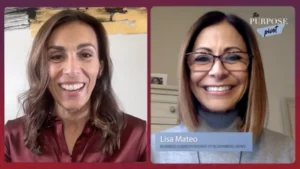Will the Paper Chase Persist? Preparing for the Future
In the latest episode of Unlocking Potential, brought to you by Baldwin Technologies, we delved deep into the world of paper shortages. Our panel of industry experts, including Toni McQuilken, Senior Editor at PRINTING United, Kent Tucker, Vice President of Tucker Castleberry, and Julie Brannen, Director of Regional Sales and Sustainable Solutions at Monadnock Paper Mills, shared their valuable insights on the challenges faced during the height of the paper shortage and the unexpected positive outcomes that emerged.
During the height of the paper shortage, one of the most significant challenges was the skyrocketing cost of shipping containers. What used to cost around $3,000 pre-pandemic surged to over $30,000 at its peak. Fortunately, costs have come down to around $5,000 to $6,000, but they remain higher than before. On the bright side, the shortage forced brands and print buyers to become more flexible and creative in their approach. Many discovered better options for their needs, leading to innovative applications and products.
Kent Tucker highlighted how their proactive approach to buying paper enabled them to win new business from printers who hadn’t secured paper in advance. Some clients saved up to 40% by purchasing paper at a discount before shortages hit. Now, as paper prices begin to stabilize, those accustomed to higher costs are seeing a welcomed reduction.
Julie Brannen emphasized that the paper shortage affected more than just paper. Raw materials like latex, used in inks and substrates, were in short supply, leading to innovation in production methods. Many companies, including Monadnock Paper Mills, found more efficient ways to maintain product performance.
Looking ahead, the panel discussed the importance of relationships, communication, and sustainability. They stressed the need for better forecasting to avoid future disruptions and the importance of balancing global and domestic supply chains.
As for the future of the paper industry, it remains uncertain due to the complex web of factors that led to recent disruptions. However, the industry is adapting to changing demands, especially in the realm of digital printing, personalized marketing, and sustainability, which are likely to play pivotal roles in its evolution.
In conclusion, the paper shortage taught valuable lessons about adaptability and the need for strong communication and relationships within the industry. It’s a reminder that by staying nimble and forward-thinking, the paper industry can better prepare itself for future challenges, whatever they may be. For more insights, visit baldwin.com and stay tuned for the next episode of Unlocking Potential.









